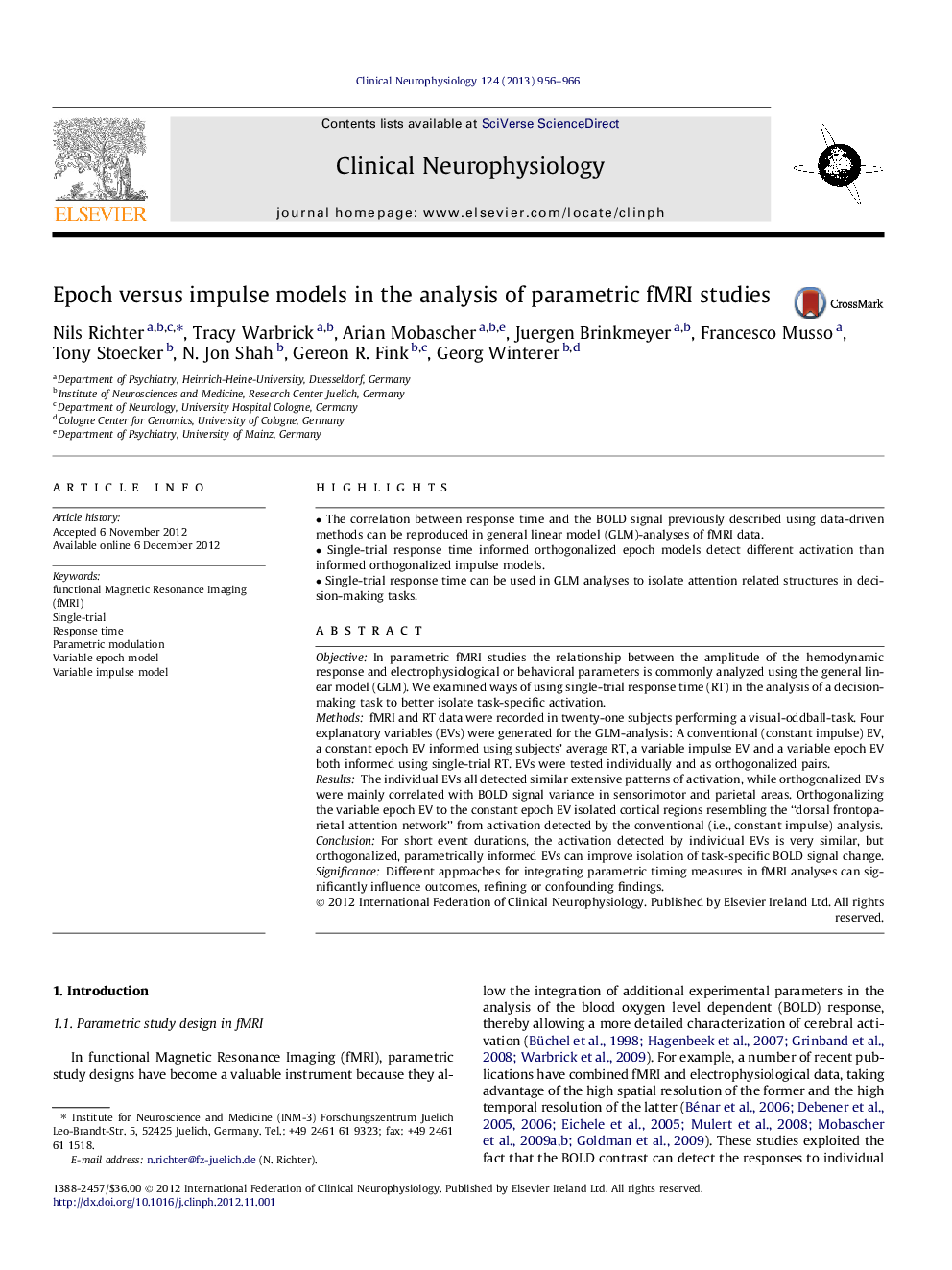| Article ID | Journal | Published Year | Pages | File Type |
|---|---|---|---|---|
| 3044334 | Clinical Neurophysiology | 2013 | 11 Pages |
ObjectiveIn parametric fMRI studies the relationship between the amplitude of the hemodynamic response and electrophysiological or behavioral parameters is commonly analyzed using the general linear model (GLM). We examined ways of using single-trial response time (RT) in the analysis of a decision-making task to better isolate task-specific activation.MethodsfMRI and RT data were recorded in twenty-one subjects performing a visual-oddball-task. Four explanatory variables (EVs) were generated for the GLM-analysis: A conventional (constant impulse) EV, a constant epoch EV informed using subjects’ average RT, a variable impulse EV and a variable epoch EV both informed using single-trial RT. EVs were tested individually and as orthogonalized pairs.ResultsThe individual EVs all detected similar extensive patterns of activation, while orthogonalized EVs were mainly correlated with BOLD signal variance in sensorimotor and parietal areas. Orthogonalizing the variable epoch EV to the constant epoch EV isolated cortical regions resembling the “dorsal frontoparietal attention network” from activation detected by the conventional (i.e., constant impulse) analysis.ConclusionFor short event durations, the activation detected by individual EVs is very similar, but orthogonalized, parametrically informed EVs can improve isolation of task-specific BOLD signal change.SignificanceDifferent approaches for integrating parametric timing measures in fMRI analyses can significantly influence outcomes, refining or confounding findings.
► The correlation between response time and the BOLD signal previously described using data-driven methods can be reproduced in general linear model (GLM)-analyses of fMRI data. ► Single-trial response time informed orthogonalized epoch models detect different activation than informed orthogonalized impulse models. ► Single-trial response time can be used in GLM analyses to isolate attention related structures in decision-making tasks.
